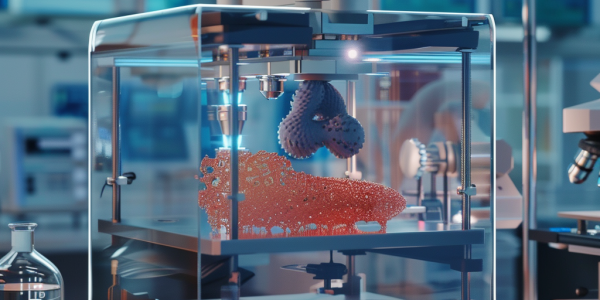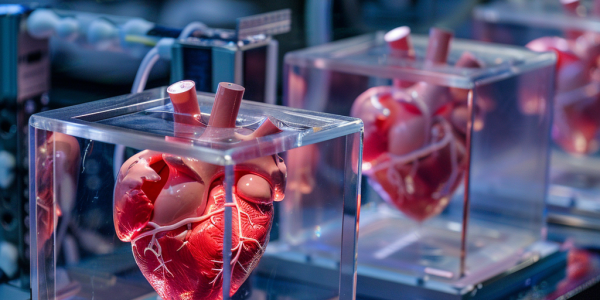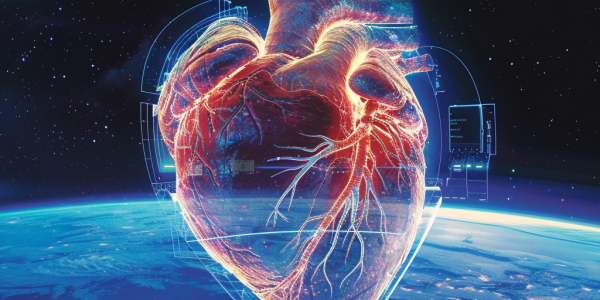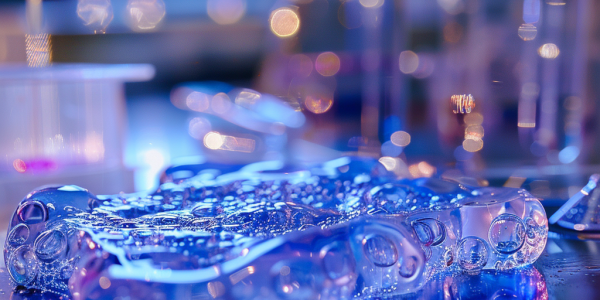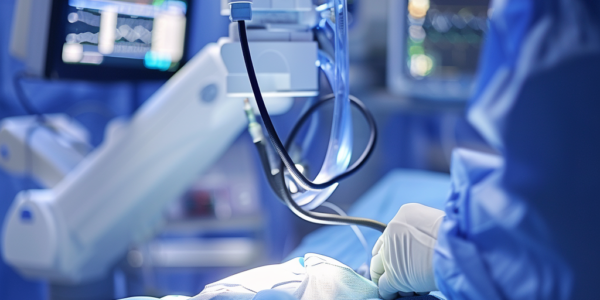MIT Researchers Unveil Breakthrough in Metabolic Imaging Techniques
A groundbreaking study from MIT introduces a novel metabolic imaging technique that significantly enhances penetration depth, allowing for clearer and more detailed visualization of living tissues. This innovative approach accelerates imaging processes and eliminates the need for tissue preprocessing, paving the way for advancements in cancer research, drug discovery, and more.
Penn State Researchers Unveil Revolutionary HITS-Bio Bioprinting System
Penn State University researchers have launched the High-throughput Integrated Tissue Fabrication System for Bioprinting (HITS-Bio), a groundbreaking technology that produces functional biological tissues ten times faster than traditional methods. Utilizing cell clusters known as spheroids, HITS-Bio ensures high cell viability while enabling rapid assembly of complex tissue structures. This innovative system promises to revolutionize regenerative medicine, with potential applications in organ transplantation and advanced therapeutic interventions.
Johns Hopkins Study Reveals Adverse Effects of Low Gravity on Heart Muscle Cells
A groundbreaking study by Johns Hopkins Medicine reveals the detrimental effects of low gravity on human heart muscle cells. Conducted aboard the International Space Station, the research shows that heart tissues exposed to microgravity exhibit significantly reduced strength and rhythmicity. These findings highlight critical health implications for astronauts on long space missions and offer insights into heart disease and aging on Earth.
Study Reveals Microgravity’s Alarming Impact on Astronaut Heart Health
A groundbreaking study from Johns Hopkins University reveals that microgravity significantly impacts heart health, with heart cells exhibiting reduced contraction strength in space. This research, involving bioengineered heart tissue samples sent to the ISS, raises concerns for long-duration space missions like those to the Moon and Mars. Understanding these cardiovascular effects is crucial for astronaut health and future space exploration.
Breakthrough in Regenerative Medicine: New Cell Therapy Enhances Tissue Healing
Recent research from Monash University reveals groundbreaking advancements in regenerative medicine through a new cell-based therapy utilizing Regulatory T cells. This innovative approach significantly enhances tissue healing, potentially revolutionizing treatments for injuries and conditions such as heart attacks and brittle bone disease. Published in Nature Communications, the study emphasizes the importance of timely intervention and the possibility of off-the-shelf cell therapies, paving the way for more efficient and accessible medical solutions.
Breakthrough Study Reveals ‘Dancing Molecules’ for Cartilage Repair
A groundbreaking study from Northwestern University reveals a novel injectable therapy using innovative ‘dancing molecules’ to repair damaged cartilage cells. This research, published in the Journal of the American Chemical Society, showcases how synthetic nanofibers can stimulate cellular receptors, offering significant advancements in regenerative medicine and potential treatments for conditions like osteoarthritis.
New Chemical Mixture Allows Brain Tissue to be Frozen and Thawed Without Damage
Scientists in China have developed a new chemical mixture, MEDY, that allows brain tissue to be frozen and thawed without damage, even after being stored for up to 18 months. This breakthrough in brain tissue preservation could revolutionize research in neuroscience and medicine, offering a way to study diseases and conduct experiments without the risk of freezing-induced damage.
Revolutionary Peptide-Based Hydrogels Breakthrough in Biomedical Engineering
Scientists have made a breakthrough in biomedical engineering with peptide-based hydrogels that can repair damaged organs and tissues. These innovative materials offer targeted drug delivery, biocompatibility, and versatility for a wide range of medical applications, promising to revolutionize regenerative medicine.
Cleveland Clinic Pioneers New Tissue-Sparing Ablation Procedure for Atrial Fibrillation
Cleveland Clinic has made headlines for being among the first hospitals to perform a new tissue-sparing ablation procedure known as pulsed field ablation (PFA). This innovative technology offers a safer and more effective alternative for patients with symptomatic atrial fibrillation (Afib), providing hope for improved outcomes and quality of life for individuals living with Afib.
Breakthrough in Tissue Engineering: Artificial Cartilage Developed Using 3D Printing Technique
TU Wien (Vienna) has achieved a breakthrough in tissue engineering with the development of artificial cartilage using a unique 3D printing technique. This innovative approach, detailed in a study published in Acta Biomaterialia, could revolutionize the field of regenerative medicine by providing a method to precisely control tissue formation and potentially improve the development of artificial cartilage and other types of replacement tissue.


